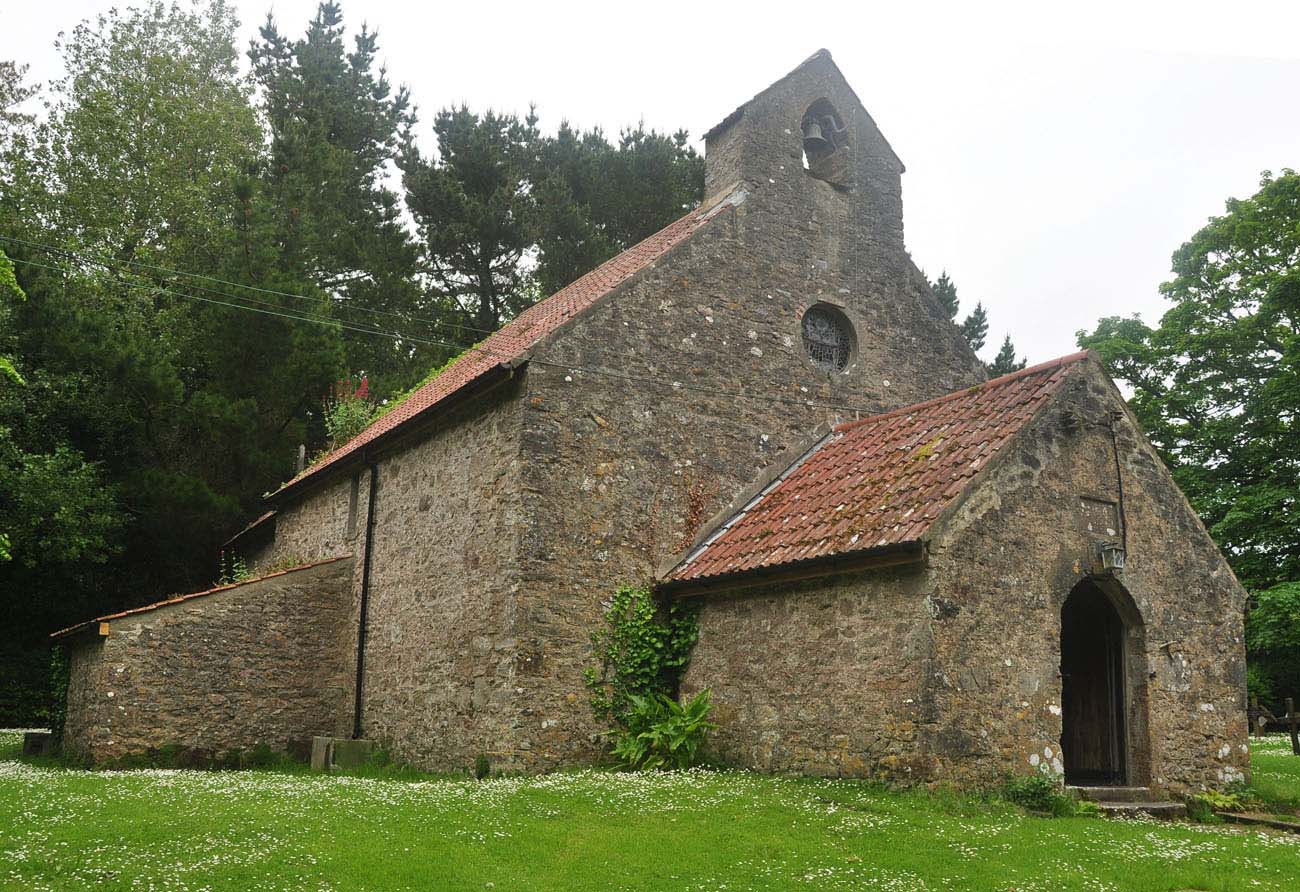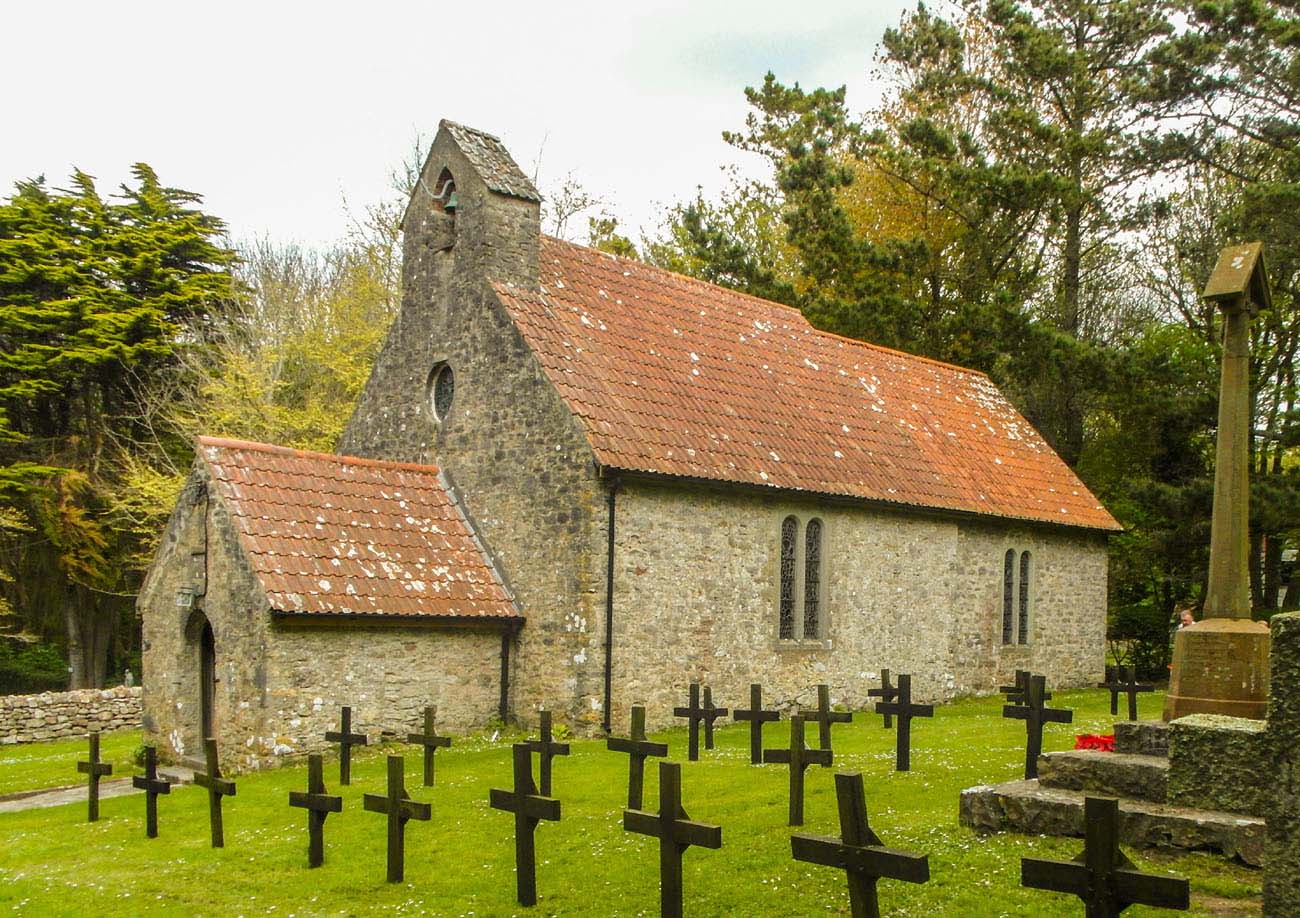History
The original small Celtic chapel was founded on the site of the church of St. David in the 6th century. After the founding of a Norman priory on Caldey around 1131, the monks rebuilt the Celtic chapel, including the older temple into the nave of the new church. Throughout the Middle Ages, the church of St. David was strongly associated with the priory, so when Henry VIII dissoluted the priory in the sixteenth century, the church declined. It was used for secular purposes, and for some time it served as a local forge. It was restored only in 1823 by Cabot Kynaston, and subsequent changes took place after the re-establishment of the Caldey Abbey in the early 20th century. Then, in the years 1923-1925, most of the windows were replaced during renovation.
Architecture
The church was erected on a hill above the village, on the north-eastern side of the priory. It obtained the form of a small, simple building consisting of a four-sided nave and a four-sided chancel in the east, narrower and shorter than the nave. Quite unusual, both of these parts were arranged on a square plan, in the nave with sides 6.1 meters long, and in the chancel 5.5 meters. The thickness of the walls was the same everywhere, about 0.9 meters. The entrance to the nave led from the west, through the Romanesque semicircular portal. Later, a porch was attached to it, above which there was a bellcote with a single bell. Inside, the nave and chancel were separated by a low arcade, only 2.4 meters wide.
Current state
The preserved to this day church was partially rebuilt in the early modern period. This applies especially to the southern and eastern walls of the chancel, modernized windows, and probably also the belfry. The original Romanesque west portal in the nave and the chancel arcade have been preserved.
bibliography:
Kinross J., Discovering the smallest churches in Wales, Stroud 2007.
The Royal Commission on The Ancient and Historical Monuments and Constructions in Wales and Monmouthshire. An Inventory of the Ancient and Historical Monuments in Wales and Monmouthshire, VII County of Pembroke, London 1925.
Wooding J., Yates N., A Guide to the churches and chapels of Wales, Cardiff 2011.


